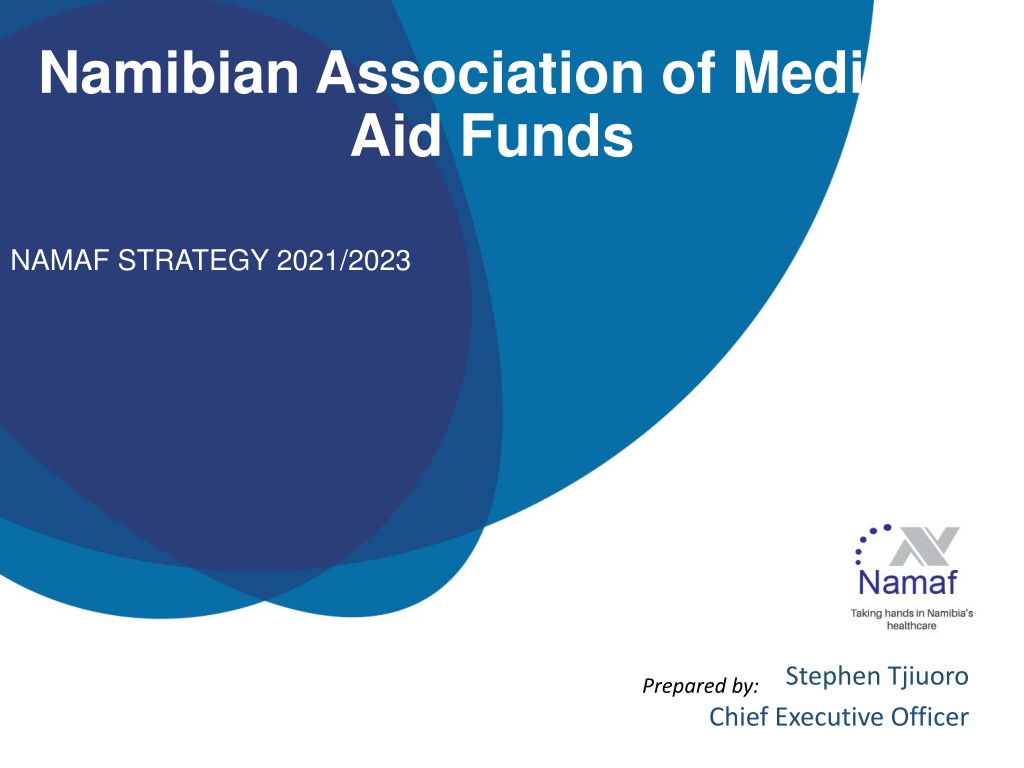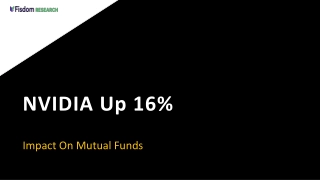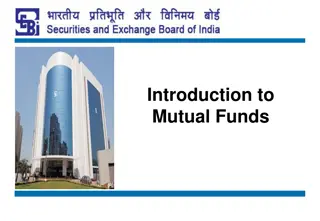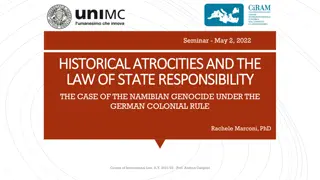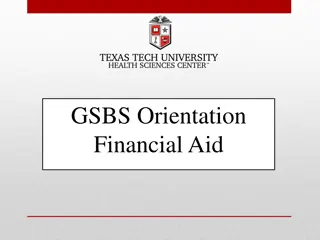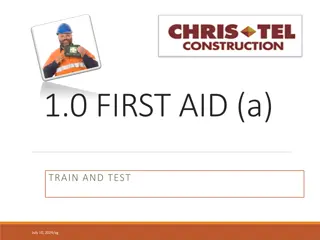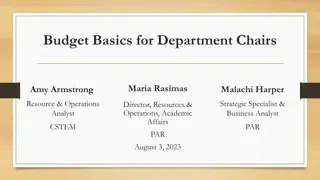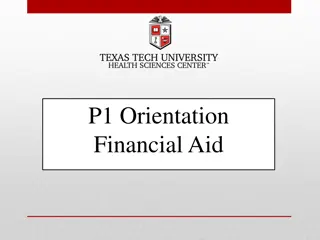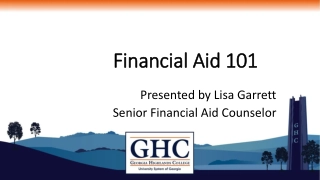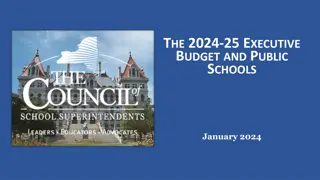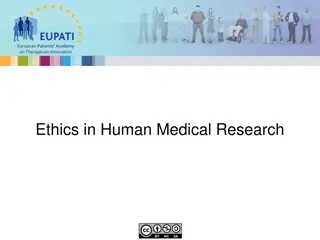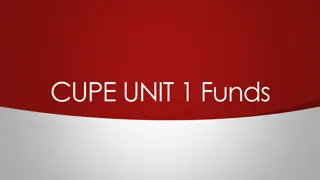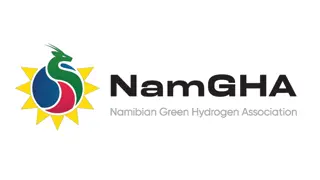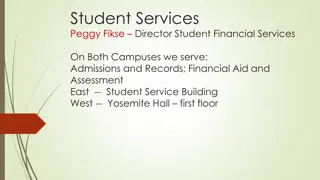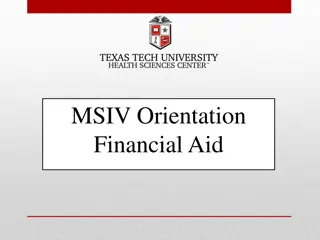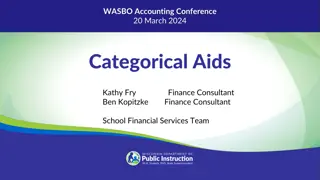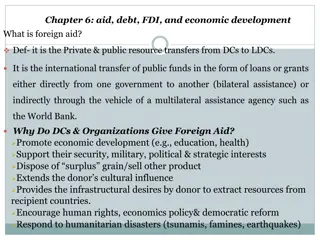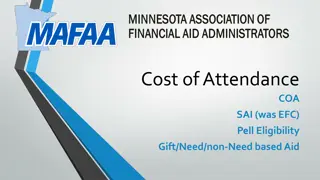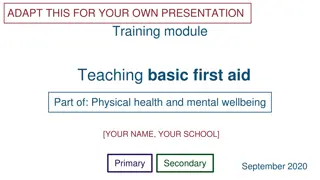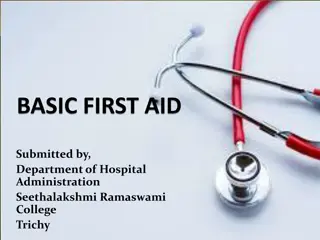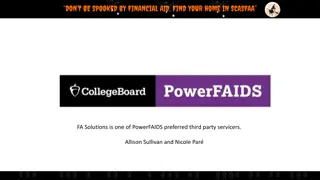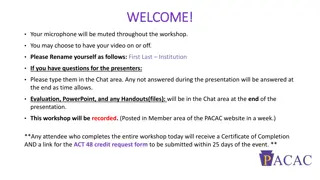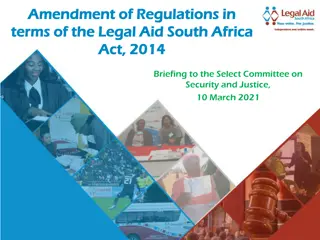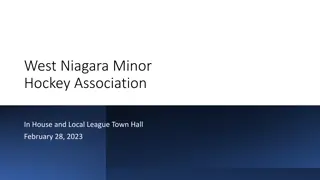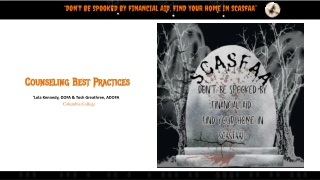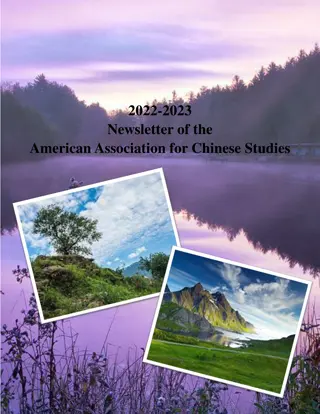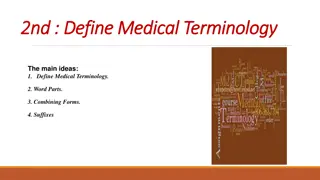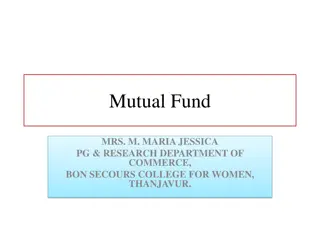Evolution and Strategy of Namibian Association of Medical Aid Funds
Evolution and strategic planning of Namibian Association of Medical Aid Funds (NAMAF) from its inception to the current strategic turn in 2021-2023. The focus is on stakeholder engagement, sustainability, and efficiency in managing medical aid funds in Namibia, with perspectives from healthcare providers, hospital forums, and other stakeholders.
Download Presentation

Please find below an Image/Link to download the presentation.
The content on the website is provided AS IS for your information and personal use only. It may not be sold, licensed, or shared on other websites without obtaining consent from the author. Download presentation by click this link. If you encounter any issues during the download, it is possible that the publisher has removed the file from their server.
E N D
Presentation Transcript
Namibian Association of Medical Aid Funds NAMAF STRATEGY 2021/2023 Stephen Tjiuoro Chief Executive Officer Prepared by:
Presentation Lay Presentation Lay- -out out 1. 2. 3. 4. 5. 6. 7. 8. 9. 10. Strategic Theme 4 11. Strategic Theme 5 Evolution of Namaf from its inception Stakeholders Healthcare Providers Perspective Hospital Forum Perspective PO s Perspective MC s Perspective Strategic Theme 1 Strategic Theme 2 Strategic Theme 3 2 July 24
Evolution of Namaf since its inception Evolution of Namaf since its inception Aim for sustainability The strategic turn (2017) (2021-2023) Statutory legitimisation Launch into existence Stakeholder reawakening Business model minded Break through self- perpetuation Management renewal Stock taking Industry sustainability National well-being Aim for efficiency (2017- 2020) Establishment 3 July 24
Member/Patien t Clinical Best Practice/Evidence Based Medicine/Ethical rules Administrator NAMAF Medical Aid Fund Practitioner Stakeholders Stakeholders
Healthcare Providers Perspective Healthcare Providers Perspective Mandate: To control, promote, encourage and co-ordinate the establishment, development and functioning of funds in Namibia. Overall, respondents agree that NAMAF controls Medical Aid funds to the point where it has become authoritarian. Although they serve an administrative function, they present a hurdle to the optimal functioning of the private healthcare sector. There is a need to include direct representation from healthcare providers in order to promote and encourage the development of medical aid funds. Concerns over the sustainability, particularly in reference to affordability, of private medical aids were raised. NAMAF is seen as an opaque institution that has monopolised the funding industry. Success therefore will be consultation and collaboration with healthcare practitioners, democratised access to affordable medical aid funds and continuous active engagement with all stakeholders. 5 July 24
Hospital Forum Perspective Hospital Forum Perspective How well does NAMAF currently do in the fulfilment of these statements? What will success in the maximum fulfilment of these statements look like in three years from now? Mandate: To control, promote, encourage and co- ordinate the establishment, development and functioning of funds in Namibia. In general, this group felt that NAMAF was doing well in their commitment to fulfilling this statement. Success, to this group, would be manifested in growth and the addition of valued expertise. There is a need for transparency in terms of communication between NAMAF and its stakeholders as well as regulated specialist pricing. 6 July 24
Principal Officers Perspective Principal Officers Perspective Top three strategic challenges for private healthcare in Namibia over the next three years Why should this be regarded as a priority for the strategy renewal process? What would you like to see NAMAF achieve as a result of prioritising this topic? NAMAF should protect the private healthcare industry from collapse. They should engage with government to enhance the regulation of HCP s conduct and control tariffs. These tariffs should be published by government as maximum accepted tariffs. Internationally accepted treatment protocols should be adopted for verifiable health outcomes. Furthermore, NAMAF should introduce tangible projects and measurable alternatives to current reimbursement models. Engagement with HCP should be expedited, as should the reduction of members co- payments to reduce healthcare spend. Government should also provide clear policy direction Affordability Medical aid is unaffordable to most and the sustainability of the industry is under threat. Unaffordability leads to a decline in medical aid membership and that compromise the quality of the system. Medical aid costs are ever-increasing and consumers have limited choice when it comes to choosing well-priced healthcare. Unaffordability also negatively impacts medical aid funds. 7 July 24
Management Committee Perspective Management Committee Perspective Formulation How well does NAMAF currently do in the fulfilment of these statements? Although NAMAF is doing better than a few years ago, the group largely agrees that the current framework does not support NAMAF in the execution of its mandate. Certain stakeholders in the industry seem to have increasing resistance towards NAMAF, which further hampers NAMAF s efficacy. More clarity on NAMAF s influence when it comes to the control aspect of its mandate will aid the fulfilment of this statement. What will success in the maximum fulfilment of these statements look like in three years from now? Success will come when NAMAF plays a leading regulatory role, which will not be confused with the role of NAMFISA and aids in the creation of affordable and inclusive medical aid, the founding objective. NAMAF should be at the forefront of driving initiatives that promote collaboration, the expansion of the industry and control service providers in a way which reduces fraud, waste and abuse in the industry. NAMAF would ve achieved success when medical aid funds are held accountable for their actions and adhere to statutory laws. The organisation should further control clinical aspects of the industry, promote the public s understanding of the funding industry, and encourage stakeholder participation in further development. One respondent noted that legislative change is required for NAMAF to fulfil its regulatory role. Mandate: According to the Medical Aid Funds Act 23 of 1995, Article 10(3), the object of the Association shall be to control, promote, encourage and co-ordinate the establishment, development and functioning of funds in Namibia . 8 July 24
Strategic Theme 1 Strategic Theme 1 Legislative and governance reform Goal What do we mean This strategic theme is focused but limited to the four corners of Namaf s statutory objects as set out in the Medical Aid Funds Act, 1995 (Act No. 23 of 1995) and regulations, 1997. However, the MAFs Act, 1995 and regulations are inadequate. The following are the ultimate output of this strategic theme by the end strategic period: Firm regulator that provides clear leadership and direction in the governance healthcare industry. up Namaf as the of the Gazetted section 44 regulations. Amendments to the Medical Aid Funds Act 1995; and/or Namaf Bill. 9 July 24
Strategic Theme 2 Strategic Theme 2 The sustainability of the healthcare industry Goal What do we mean This strategic theme is focused on creating a sustainable healthcare industry for the future. The following are the components of a blueprint for a sustainable future: (a) Conducive legislative and regulatory environment. This is covered in Strategic Theme 1; (a) Appropriate conduct of stakeholders: consumers induced demand, holders of Practice number (supplier induced demand) and MAFs obligation to mitigate the risk of Waste, Fraud and Abuse; To industry in Namibia in the creation of a blueprint for a sustainable future lead the healthcare (a) Complete coding systems (PCNS, ICDs, Procedures Codes and coding for medicines and surgical consumables), billing rules, and guidelines; (a) Continuous identification of drivers of healthcare inflation and barriers to affordability and access to care; 10 July 24 (a) Development, implementation and monitoring of implemented interventions and strategies; and
Strategic Theme 3 Strategic Theme 3 Stakeholder participation and ownership Goal What do we mean This strategic theme seeks as its ultimate strategic output, satisfied stakeholders. This is envisaged to be an outcome of the following: To be at the forefront of a collaborative system, sharing knowledge and taking action to achieve real benefit with and for stakeholders healthcare Maintain Namaf s accountability to the Minister of Finance and Annual General Meeting; Engagement and consultation on key identified issues across Namaf functions; and Namaf brand visibility and awareness 11 July 24
Strategic Theme 4 Strategic Theme 4 Research, Development and Learning Goal What do we mean: This strategic theme focuses on collaborating and strengthening partnership with international entities having similar objects and local institutions of higher learning. The mutual relationships created benchmarking and carryout action research on healthcare financing and delivery as an aid for evidence-based policy decisions and system improvement. To be the catalyst of relevant research, development and learning in the industry. would be aimed at 12 July 24
Strategic Theme 5 Strategic Theme 5 Resource and Support Goal What we mean The goal is to provide human capital, finance and Information and technology support during delivery of the strategy. The ultimate output of these components are: (a) Human resources To secure adequate resources and support for the effective strategy execution. (i) Attract and retain high performing and competent staff (b) Finance (i) Maintain unqualified audit opinion status (c) Information and Technology (i) Established IT Governance framework 13 July 24
Thank You 9 November 2021
